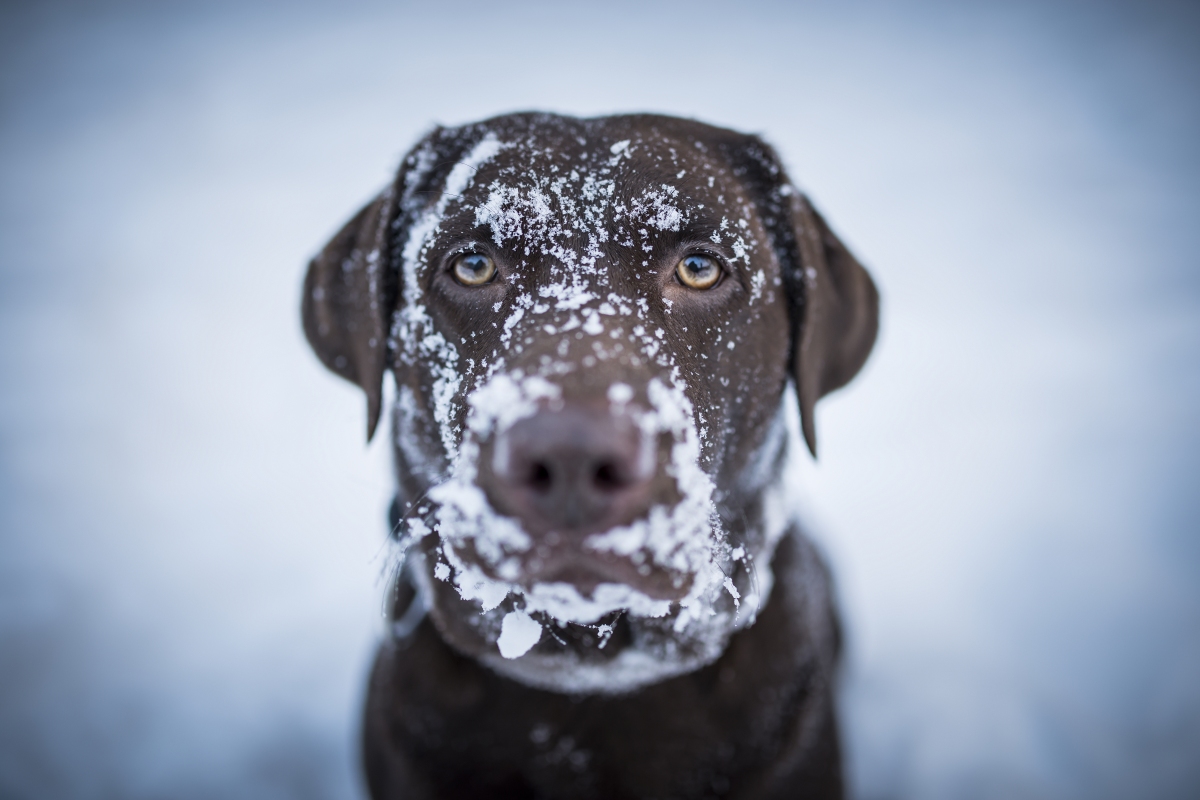5 Winter Dangers for Dogs—And How to Avoid Them
By: Jessica Brody, Guest Writer
Most dog owners enjoy playing in the snow with their dogs – see how they play snowballs, meet snowmen, and chase the neighbor’s kids as they slide down the hill on their sleds. But while winter brings a lot of fun to our dogs, it can also bring some dangers. It’s important to be aware of the hazards winter can pose to your dog’s health so you can take the necessary steps to protect him.
1. Take a break from your walk
Even if your dog is full of energy, you’ll need a break when you’re walking him or going on a hike. Resting helps keep his paws and coat free of snow, ice, salt, or de-icing products. As you walk, you may find your dog trying to lick snow off his feet—the problem is that the more he licks, the more the snow sticks.Frequent stops to wipe off your dog’s paws are best, especially since He’s probably licking off the salt and ice melt, which can make him very sick.

When you wipe your dog’s paws, be sure to check for chunks of ice, snow, or salt between his toes. If ice or snow has stained his fur, gently wipe the problem area with a clean, dry towel to loosen the ice and remove it. If you’re going hiking or hiking, be sure to keep a few towels with you to keep your dog warm and comfortable.you may want If you plan on doing regular winter hikes, invest in booties to protect his feet.
2. Don’t leave your dog in the car
Chances are, you are well aware of the dangers of leaving your dog in the car In the hot summer. Unfortunately, people don’t realize that the dangers of leaving dogs in cars during the winter are just as serious. When it’s cold outside, a car is like a refrigerator. If you leave him in a cold car for too long, your dog could become hypothermic and possibly die. It’s best to keep him warm at home while running errands in the cold winter.
3. Keep your dog on a leash
Snow and ice can weaken the scent, making it difficult for dogs to find their way.When you go for a walk or hike with your dog in the winter, let him on the belt So he won’t lose his scent and get lost. Some dogs panic and run away during a snowstorm because they become disoriented and cannot use scent to find their way. Sadly, this is one of the reasons more dogs are lost in winter than in any other season. It’s a good idea to have an ID tag on your dog during the winter months and make sure he’s microchipped as well.
4. Clear a path in the yard
Best if you have a yard where your dog can poop shovel a way Wear snow for his winter use. Some dogs don’t like walking on or walking through snow, and they can have accidents inside the house when there is snow on the ground. Other dogs, especially long-haired ones, are hesitant to go outside because their fur is covered in little snowballs. Clearing the roads made it easier for him to do business outside.

It helps you, too – this way makes for less work because you don’t have to spend as much time drying your dog or rubbing his stomach, legs, and paws every time he’s outside. Keep a dry towel near the door so you can dry him and warm him up every time he comes in.
5. Keep holiday chocolate out of reach
One of the highlights of winter is Valentine’s Day.While You May Love Your Dog, You Shouldn’t Share Your Box chocolate with him. Chocolate Contains Toxin, Theobromine, That Dogs Can’t Process As easy as a human being. If your dog ingests large amounts of toxins, it may cause tremors, seizures, irregular heartbeat, internal bleeding, or heart attack. The rule of thumb is that the darker the chocolate, the more dangerous it is. Even if you’ve heard that a small amount of chocolate won’t hurt your dog, it’s best to keep your dog out of his paws at all. If your dog does eat some chocolate, Use this toxicity meter to see if you should be worried.
the bottom line
Different steps are required throughout the year to keep your dog safe, healthy and comfortable. In the winter, stick with these helpful tips to get him through the season unscathed—hopefully he warms up too!

